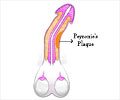Imaging techniques can help identify the types of vulnerable plaque that are most likely to cause adverse cardiac events before they occur, say researchers.
Researchers have reason to believe that imaging techniques can help identify the different types of vulnerable plaque that are most likely to cause adverse cardiac events even before they occur.
This finding comes from a clinical trial called Providing Regional Observations to Study Predictors of Events in the Coronary Tree (PROSPECT), which is the first prospective natural history study of atherosclerosis using multi-modality imaging to characterize the coronary tree.A presentation on the study was made at the 21st annual Transcatheter Cardiovascular Therapeutics (TCT) scientific symposium, sponsored by the Cardiovascular Research Foundation (CRF).
"As a result of the PROSPECT trial, we are closer to being able to predict-and therefore prevent - sudden, unexpected adverse cardiac events," said principal investigator Dr. Gregg W. Stone, immediate past chairman of CRF, professor of medicine at Columbia University Hospital and Director of Cardiovascular Research and Education at the Center for Interventional Vascular Therapy at NewYork-Presbyterian Hospital/Columbia University Medical Center.
During the multi-centre trial, 700 patients with acute coronary syndromes (ACS) were studied using three-vessel multimodality intra-coronary imaging-angiography, intravascular ultrasound (IVUS), and virtual histology.
The purpose was to quantify the clinical event rate due to atherosclerotic progression, and to identify those lesions that place patients at risk for unexpected adverse cardiovascular events-sudden death, cardiac arrest, heart attacks and unstable or progressive angina.
The study revealed that most untreated plaques that cause unexpected heart attacks are not mild lesions, as previously thought, but actually have a large plaque burden and a small lumen area. These are characteristics that were invisible to the coronary angiogram but easily identifiable by IVUS.
Advertisement
Perhaps most importantly, for the first time it was demonstrated that characterization of the underlying plaque composition (with virtual histology) was able to significantly improve the ability to predict future adverse events beyond other more standard imaging techniques.
Advertisement
Source-ANI
TAN














